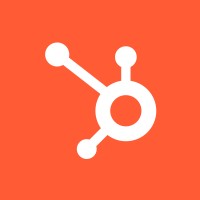Building your business becomes significantly more manageable when you automate various processes using a CRM. If you’re looking for alternatives to Keap (formerly known as Infusionsoft), you’re likely seeking a CRM that offers better cost efficiency, enhanced functionality, or improved scalability. Here’s a detailed comparison of top alternatives with scalability, budget, and functionality in mind to help you make a decision that aligns with your business needs and growth objectives.
Based on a comprehensive analysis of more than 24 of the top software options on the market today, here is our curated list of the best Keap alternatives in 2024:

HubSpot Sales Hub: Best for marketing integration
Overall Score
4.5/5
Pricing
4.8/5
General features and interface
4.4/5
Core features
4.5/5
Advanced features
3.8/5
Integration and compatibility
4.8/5
UX
4.8/5
Pros
- Comprehensive free plan
- Supports more than 1,000 integrations with various applications
- Extensive customization of reports and workflows
- Easy content creation with advanced tools for landing pages, forms, and email templates
- AI-powered predictive analytics and sales forecasting
- Best-in-industry free training materials
Cons
- Full customer support (phone and live chat) is only available on higher-tier plans
- Costs can quickly escalate with the addition of more contacts
Why we chose HubSpot
If you’re looking for a powerful CRM alternative to Keap, HubSpot Sales Hub should be at the top of your list. Unlike Keap, HubSpot offers an incredible range of integrations—more than 1,000 of them in total. This means you can seamlessly connect it with the other tools and apps your business uses, boosting efficiency and productivity across the board.
One of HubSpot’s standout features is its sales pipeline management capabilities. With advanced tools for tracking and automating your sales processes, you’ll be able to keep everything organized and streamlined like never before. And don’t just take our word for it—users rave about how intuitive the interface is and how much more they can get done thanks to features like task management that help them stay on top of their daily to-dos.
But where HubSpot shows its mettle is with its AI-powered predictive lead scoring. This innovative tool uses artificial intelligence to forecast sales and prioritize your hottest leads. It gives users a real strategic edge when it comes to boosting conversions and making smart decisions about where to focus your efforts—something Keap just can’t match.
HubSpot also delivers impressive reporting and analytics capabilities that give you deep insights into how your sales and marketing efforts are performing.

Salesforce Sales Cloud: Best for enterprises
Overall Score
4.2/5
Pricing
2.7/5
General features and interface
4.5/5
Advanced features
4.5/5
Integration and compatibility
3.5/5
UX
3.5/5
Pros
- Highly customizable
- Extensive third-party integration capabilities, including ERP, CMS, and e-commerce platforms
- Detailed reporting and real-time analytics
- Ability to scale and accommodate extensive data and user needs
- AI for predictive analytics and automating sales processes
- Comprehensive mobile app support
Cons
- High price point, especially for advanced features and larger teams
- Initial setup and configuration can be time-consuming and complex
- Requires additional purchases for certain features and integrations
Why we chose Salesforce
Salesforce Sales Cloud is a top choice for large enterprises that require extensive customization and advanced capabilities. Einstein Copilot, Salesforce’s conversational AI assistant, is a significant upgrade in its AI capabilities. This tool enhances productivity by generating personalized responses and automating complex tasks across various business functions, which Keap lacks. For example, Einstein Copilot can close a customer service case, create a sales opportunity, and execute multiple related tasks based on user prompts.
Salesforce’s integration capabilities are superior to Keap (and most other CRMs on the market), allowing seamless data flow across ERP, CMS, and e-commerce platforms. The customizable reports and dashboards offer detailed, real-time insights into sales performance, making it easier for businesses to make data-driven decisions. Users have highlighted its ability to tailor workflows and create custom fields, which provides greater flexibility and control over the CRM environment.

Creatio: Best for workflow automation
Overall Score
4.2/5
Pricing
2.7/5
General features and interface
4.7/5
Advanced features
5/5
Integration and compatibility
3.4/5
UX
4.8/5
Pros
- No-code customization of workflows
- AI and machine learning capabilities for predictive analytics and automated insights
- Third-party integrations, including ERP and industry-specific software
- Omnichannel support tools for personalized customer interactions
- Ready-to-use industry workflows and templates for 20 verticals
Cons
- Contract required
- Regular updates may disrupt custom processes
Why we chose Creatio
Creatio’s no-code platform allows users to create and modify workflows, interfaces, and data structures through intuitive drag-and-drop tools, making it far more flexible and adaptable than Keap.
The platform provides a 360-degree view of customers, integrating comprehensive profiles and interaction histories with AI-generated insights. This significantly enhances personalized customer service and decision-making. Keap, in contrast, offers more basic contact management features and does not include such deep analytical capabilities. This difference means Creatio can better tailor interactions and anticipate customer needs.
Another unique advantage is Creatio’s end-to-end workflow automation, which seamlessly connects sales, marketing, and service processes. Users have praised Creatio for its ability to automate complex tasks and improve efficiency through real-time data updates and omnichannel support.
Creatio’s advanced reporting and analytics tools also surpass Keap’s offerings, enabling businesses to generate detailed, customizable reports and monitor key performance indicators with ease.
Also read: Best Lead Management Software (2024)

monday CRM: Best for project management
Overall Score
4.2/5
Pricing
3.5/5
General features and interface
4.3/5
Advanced features
3.1/5
Integration and compatibility
4.8/5
UX
4.5/5
Pros
- Visual project management
- Real-time collaboration
- Complex automation workflows with easy-to-use templates and custom triggers
- Customizable workflows
- Ease of use
Cons
- Limited built-in marketing tools
- Complex setup for custom automations
Why we chose monday CRM
monday CRM’s main draws are its visual project management tools and extensive workflow automation capabilities. Its customizable Kanban boards and Gantt charts provide a clear and intuitive way to manage tasks and track progress, a feature that Keap lacks.
monday CRM excels in automation, offering easy-to-use “if-then” automation recipes that streamline repetitive tasks without requiring coding skills.
Its extensive integration capabilities, including native connections with Slack, Google Calendar, and Microsoft Teams, significantly enhance its utility in diverse business environments. Keap’s integration options are more limited, often requiring third-party tools for integrations that monday handles natively.
Users also highlight monday’s advanced reporting and analytics, which offer customizable dashboards for real-time insights into sales performance and team activities. This provides a more comprehensive data visualization than Keap, which has more basic and less customizable reporting tools.

EngageBay: Best for affordability
Overall Score
4.6/5
Pricing
5/5
General features and interface
4.3/5
Core features
4.8/5
Advanced features
4.3/5
Integration and compatibility
4.6/5
UX
4.3/5
Pros
- Competitive pricing
- Excellent customer support, according to multiple users
- Comprehensive marketing automation
- Free plan for up to 15 users
Cons
- Limited reporting tools
- Limited features in free tier
- Call scripts and recordings only available on highest tier plan
Why we chose EngageBay
EngageBay is a top alternative for small and medium-sized businesses seeking a comprehensive yet affordable CRM solution. One of EngageBay’s strengths is its advanced marketing automation capabilities, including email sequences, SMS campaigns, and workflow automations, which are more sophisticated compared to Keap. For instance, EngageBay allows up to 30,000 contacts on its introductory package, whereas Keap limits users to 500 contacts on its Pro plan.
EngageBay provides a 360-degree customer view by consolidating data from various touchpoints into a single dashboard, enhancing personalization and decision-making, which is more integrated than Keap’s offering. EngageBay users also benefit from exceptional customer support, frequently highlighted as superior to Keep, which can sometimes be slow and less effective.
The real kicker: EngageBay offers a free plan for up to 15 users, a significant advantage for startups and small businesses on tight budgets, unlike Keap, which does not offer a free plan. The appointment scheduling feature in EngageBay syncs with Google and Office 365 calendars, automates reminders, and adjusts for time zones. These features make it more efficient than appointment scheduling with Keap.

Pipedrive: Best for sales teams
Overall Score
4.2/5
Pricing
3.5/5
General features and interface
4.3/5
Core features
4.6/5
Advanced features
3.5/5
Integration and compatibility
4.8/5
UX
4/5
Pros
- Visual sales pipeline
- Affordable pricing
- Advanced sales automation
- LeadBooster (includes chatbots, live chat, and a prospector)
- 300+ integrations
Cons
- Limited marketing automation
- Only includes basic reporting tools
Why we chose Pipedrive
If you’re part of a sales team or running a small business, Pipedrive CRM could be the intuitive and visually driven tool you need. One of its standout features is the visual sales pipeline, which uses an easy-to-navigate drag-and-drop interface to manage deals and track progress. This visual approach makes it much more user-friendly than Keap, which can often feel cluttered and less intuitive.
Pipedrive’s LeadBooster feature significantly enhances lead generation with integrated tools like chatbots, live chat, and web forms. These interactive lead capture methods are far more dynamic than Keap’s more basic lead capture functionalities. With Pipedrive, you have a chatbot on your website that interacts with visitors 24/7, converting them into leads while you sleep.
The AI Sales Assistant in Pipedrive goes a step further by analyzing your sales data and recommending next steps. This level of sophistication means you get actionable insights right when you need them, something Keap simply doesn’t offer. For example, while Keap might send you reminders to follow up, Pipedrive’s AI can suggest which leads to prioritize based on past interactions and potential for closing deals.
Pipedrive also wins out when it comes to email integration and automation. With two-way sync, customizable templates, and automated follow-ups, it streamlines your communication incredibly effectively. Keap, on the other hand, often requires more manual intervention and lacks the seamless integration that Pipedrive provides.
Finally, Pipedrive’s customizable dashboards and reporting give you detailed insights into your sales performance and help forecast revenue with precision. These advanced analytical capabilities allow you to see where your sales are heading and make data-driven decisions.
Key components in a Keap alternative
When seeking an alternative to Keap, it’s essential to evaluate various components that can streamline your business operations and facilitate a smooth transition. Here are some key factors to consider:
- Marketing and sales automation: Look for platforms that offer the ability to automate marketing campaigns, lead nurturing processes, and sales follow-ups. Tools like HubSpot and ActiveCampaign are known for their comprehensive automation features, which can help scale your marketing efforts and improve sales productivity.
- Integration capabilities: Ensure the CRM you choose can integrate well with your existing tools and platforms, such as email marketing services, social media, and e-commerce solutions. Zoho CRM and Salesforce are widely recognized for their extensive integration options, allowing you to connect with a wide range of third-party applications and enhance overall functionality.
- Customization and flexibility: A good CRM should offer extensive customization options, enabling you to tailor workflows, dashboards, and reports to meet your specific business needs. Platforms like Freshworks CRM and Apptivo provide user-friendly customization tools, allowing businesses to adapt the CRM without requiring technical expertise.
- User-friendly interface: The CRM should have an intuitive and user-friendly interface that minimizes the learning curve for your team. Insightly and Pipedrive are known for their visual pipeline management and straightforward dashboards, making it easy for users to navigate and manage their data.
- Customer support and training resources: Reliable customer support and comprehensive training resources are crucial for a smooth transition and ongoing use. Zoho CRM and Freshworks CRM are often praised for their responsive customer support, while platforms like Salesforce offer extensive training resources and support plans to assist users.
- Reporting and analytics capabilities: Advanced reporting and analytics tools are essential for tracking performance, identifying trends, and making data-driven decisions. Insightly and HubSpot offer customizable dashboards and detailed analytics, providing valuable insights into your sales and marketing metrics.
Also read: The Definitive Guide to Lead Qualification
Finding the right Keap alternative to meet your business needs
When seeking an alternative to Keap, prioritize platforms with excellent sales and marketing automation to streamline campaigns and follow-ups.
Integrations are crucial; look for CRMs like Pipedrive and Salesforce, which offer extensive compatibility with third-party tools. Customization is key for adapting workflows and reports to your needs, with no-code options available in Creatio and monday Sales CRM. A user-friendly interface is essential for ease of use, as seen in Pipedrive’s visual pipeline and EngageBay’s intuitive dashboard. Reliable customer support and training resources ensure smooth transitions and ongoing efficiency, with EngageBay and Salesforce offering exemplary customer service and training. Finally, advanced reporting and analytics capabilities are vital for performance tracking and data-driven decisions, as offered by HubSpot and Pipedrive.
With each CRM on our list offering unique capabilities and strengths, you should be able to find the right tool to fit your organization. Whatever your business needs to prioritize, there is a Keap alternative out there for you.
If you’re looking for more CRM options, check out our recommendations for the best CRM software for 2024.





